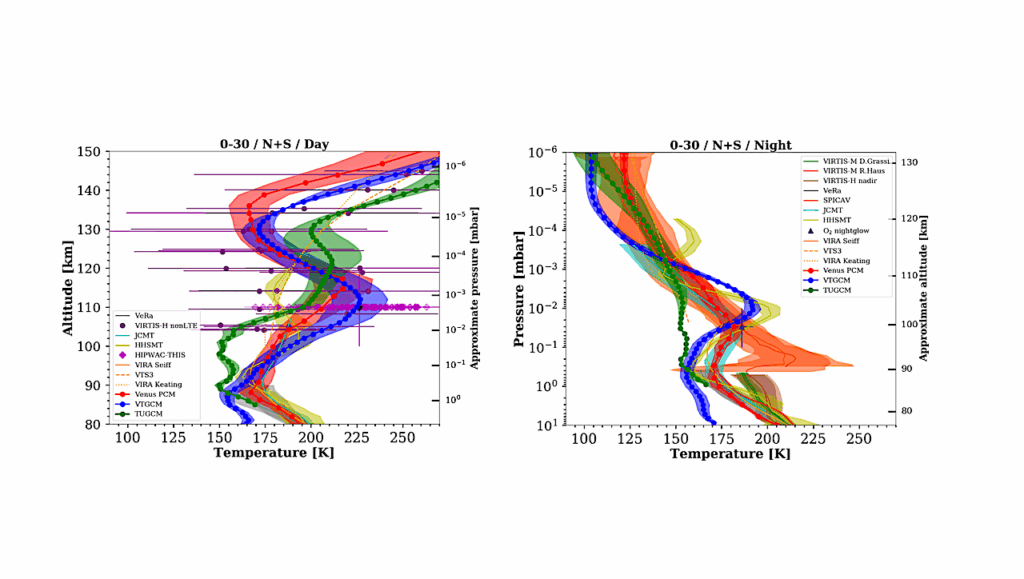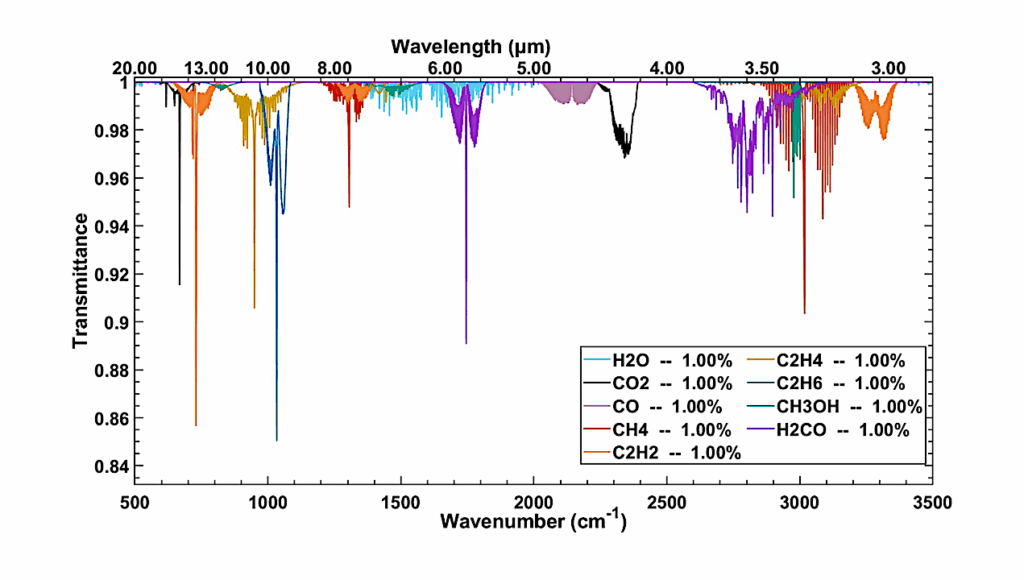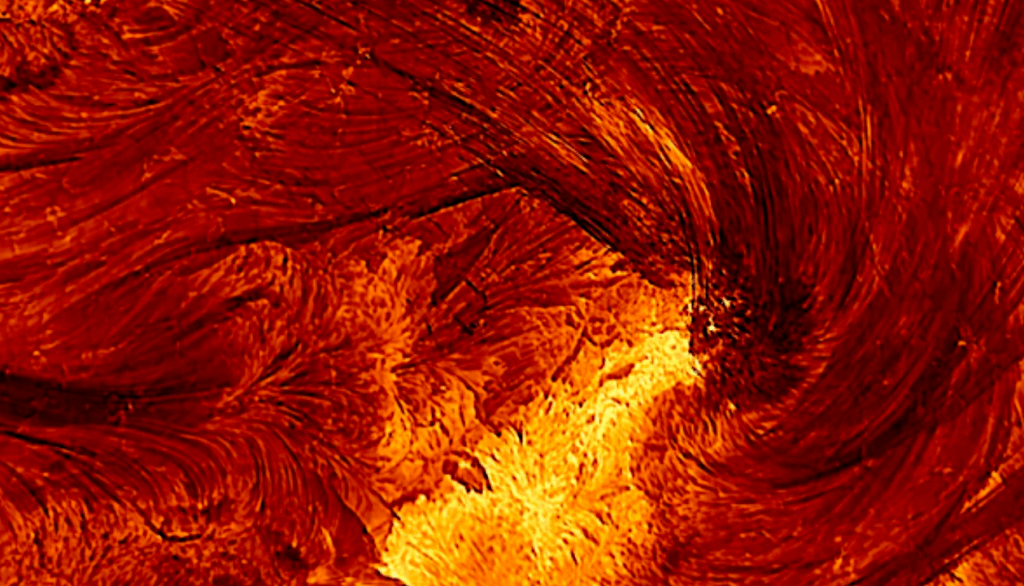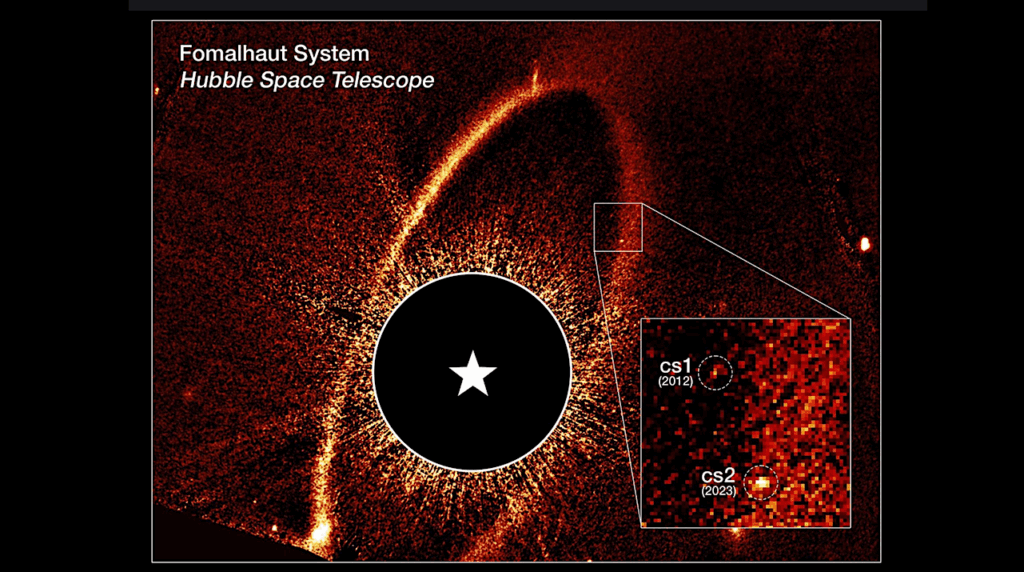Updated Mass, Eccentricity, and Tidal Heating Constraints for the Earth-sized Planet LP 791-18 d
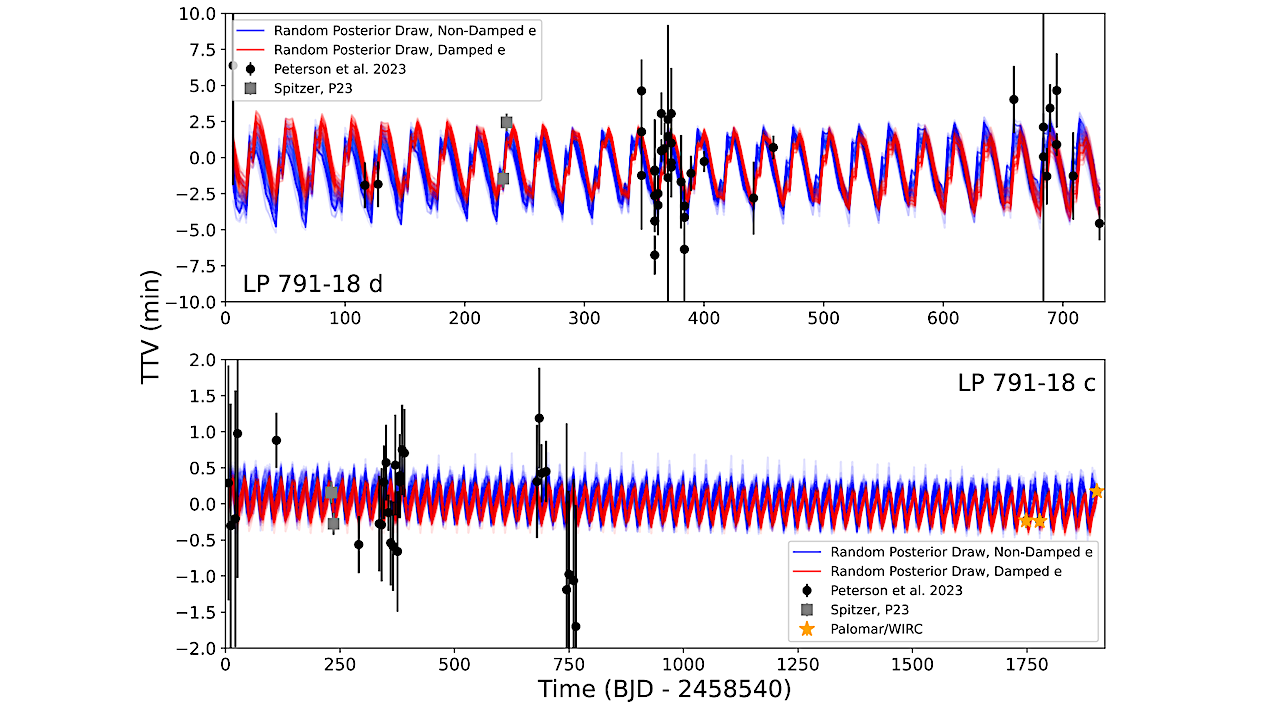
LP 791-18 d is a temperate Earth-sized planet orbiting a late M dwarf, surrounded by an interior super-Earth (LP 791-18 b, RP = 1.2 R⊕, P=0.95 days) and an exterior sub-Neptune (LP 791-18 c, RP = 2.5 R⊕, P=4.99 days).
Dynamical interactions between LP 791-18 d and c produce transit timing variations (TTVs) that can be used to constrain the planet masses and eccentricities. These interactions can also force a non-zero eccentricity for LP 791-18 d, which raises its internal temperature through tidal heating and could drive volcanic outgassing. We present three new transit observations of LP 791-18 c with Palomar/WIRC, including the most precise TTV measurements (< 6 seconds) of this planet to date.
We fit these times with a TTV model to obtain updated constraints on the mass, eccentricity, and tidal heat flux of LP 791-18 d. We reduce the mass uncertainty by more than a factor of two (Md = 0.91 ± 0.19 M⊕). We perform an updated fit assuming tidally damped free eccentricities and find ed=0.0011+0.0010−0.0008 and ec=0.0001±0.0001, consistent with circular orbits. We find that the observed TTVs are not sensitive to e≤ ∼0.01.
Without a tidally damped eccentricity prior, ed=0.056+0.015−0.014, much higher than the eccentricity predicted by n-body simulations incorporating the effects of dynamical excitation and tidal damping. We predict the timing of upcoming JWST secondary eclipse observations for LP 791-18 d, which could tightly constrain the eccentricity and tidal quality factor of this Earth-sized exoplanet.
Michael Greklek-McKeon, Heather A. Knutson, W. Garrett Levine, Renyu Hu, Morgan Saidel, Jonathan Gomez Barrientos, Konstantin Batygin, Björn Benneke
Comments: 14 pages, 8 figures, 4 tables, submitted to The Astronomical Journal
Subjects: Earth and Planetary Astrophysics (astro-ph.EP)
Cite as: arXiv:2501.18700 [astro-ph.EP] (or arXiv:2501.18700v1 [astro-ph.EP] for this version)
https://doi.org/10.48550/arXiv.2501.18700
Focus to learn more
Submission history
From: Michael Greklek-McKeon
[v1] Thu, 30 Jan 2025 19:01:04 UTC (7,891 KB)
https://arxiv.org/abs/2501.18700
Astrobiology,


